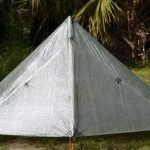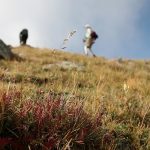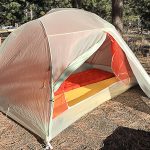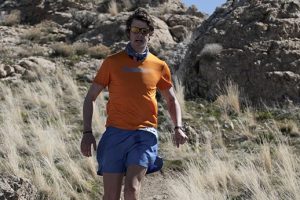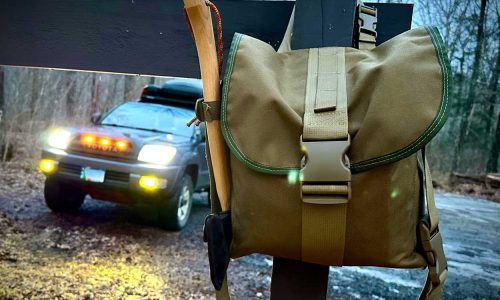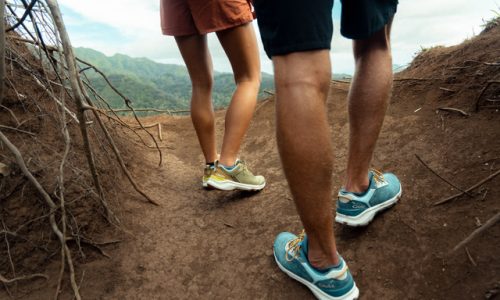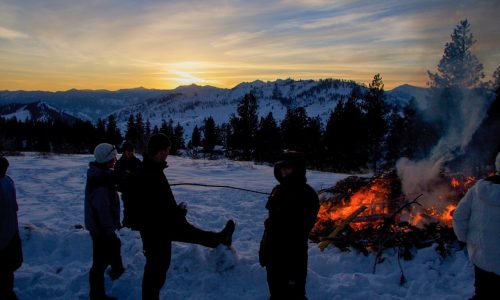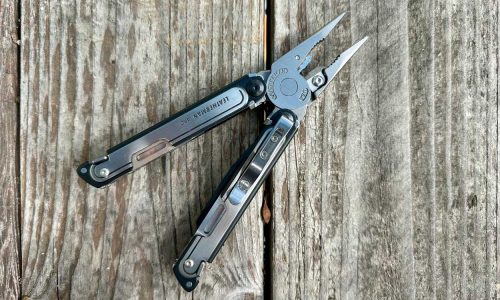Home » Gear Reviews » Hiking & Camping » Tents » Backpacking Tents » 1 Person Tents for Backpacking » Eureka Spitfire Solo
Eureka Spitfire Solo Review
April 29, 2017



 86
86 The Good
- Second lowest cost in test set
- Packs small for weight
- Easy to set up
The Bad
- Non-freestanding
- Limited access to second vestibule
- Second heaviest in set
The Eureka Spitfire Solo performed reliably and is easy to set up, but it has a large structural flaw—the inconvenience of a non-freestanding tent, without the weight savings of non-freestanding.
Shoulder Room
The Eureka Spitfire has a tall peak and a good amount of floor space, but some of that space is taken away by the tent’s geometry—from that high peak the tent’s walls slope down steeply, and the corners at the user’s head and feet make the last 6” of the tent not very useful. There is good ventilation along the base of the fly, and the tent can be partially rolled up to provide a good amount of ventilation while maintaining good protection in a windless rain.
Packability
With a trail weight of 2 lbs 12 oz, the Spitfire is the second heaviest in the test set, which hurts its performance, since its best application, given its non-freestanding design and construction, seems to be lightweight backpacking. It does roll into a compact, albeit long, roll, thanks mainly to the long sections of the two poles. Those backpackers who position their tent inside the body compartment of their pack will either have to keep it vertical or figure something out on the exterior of the bag.
Setup
First time setup for our tester was 4:00, tied for the quickest in the test set. It is easy to set up—you throw the body on the ground, stake at least the two ends, put the two hoop-style poles in (with no threading), clip up the body, throw the fly over it and buckle it down. It is non-freestanding, which limits where you’ll be able to set it up, since it must be staked at either end to have the tension to stand up, but improvisations can be made with rocks or snow anchors and some creative thinking.
Weatherproofness
The Spitfire performs well in gusty and wet conditions. The profile of the tent is high, but its single peak point and low walls make it a sturdy profile. The non-freestanding design also factors into this category, because if one of the stakes at either end pulls out, the whole tent will collapse, raising the consequences significantly. The zipper on the fly is appropriately gauged and a fold-over flap doesn’t let any water through, even during blowing rain.
Features
The Eureka Spitfire Solo has one door, which is a wide door on the side that is easy to get into and out of. On the door side, the fly rolls up to allow some sunlight in. When the fly is rolled up, only part of the vestibule is covered. Most of the vestibule area is directly in front of the door, which can make for some awkward step-overs. The non-door side can also be used as a limited-access vestibule of sorts, which can be entered by pulling up and subsequently re-securing the stake. There is a vent of the the very peak of the fly, and there is a zipper on the body which allows interior access to this vent.
Additional Product Specifications
Minimum Trail Weight: 2 lbs 12 oz
Max / Packaged Weight: 3 lbs 4 oz
Interior Floor Area: 18.1 sq ft
Vestibule Area: 4.4 sq ft
Peak Interior Height: 40 in
Scott Morris guides backpacking expeditions and hiking trips for Southern Yosemite Mountain Guides throughout the Sierra Nevada mountains of California. He is a writer, traveler, and runner. Scott tests backpacking equipment.










